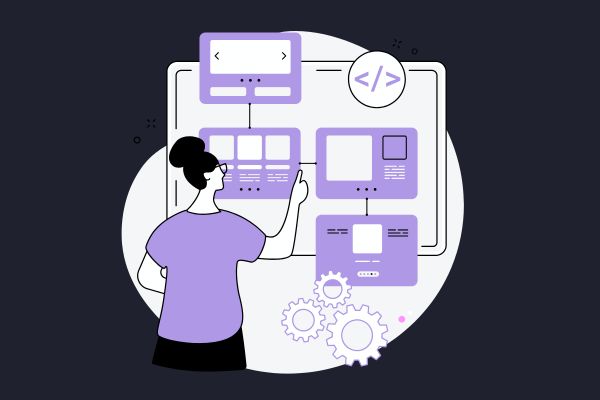Last Updated on July 22, 2025 by Becky Halls
In the constantly shifting world of SEO, some things never change, and one of these things is the importance of backlinks. But how we build them? That’s evolving fast! And if you’re still using outdated methods or skipping link-building altogether, you’re likely leaving rankings, traffic, and visibility on the table.
One strategy making a comeback, but with a fresh modern twist, is the ability to exchange backlinks – but not in the way you might remember from 2010.
Today, in 2025, exchanging backlinks is all about relevance, quality, and, increasingly, AI. Platforms like 3Way.Social are now helping users automate smart, ethical backlink exchanges – with AI-driven suggestions tailored to your domain and niche.
Let’s explore how to exchange backlinks the right way in 2025, and how to leverage the latest tools (including AI) to do it effectively, without risking penalties from Google.
Here’s what you’ll learn in this guide:
- Why backlinks still matter (and always will)
- How to exchange backlinks without tanking your rankings
- What ethical backlink exchanges look like in 2025
- The role AI plays in doing it faster and smarter
- How platforms like 3Way.Social make the process effortless
- Common mistakes to avoid
- The simple steps to get started
Contents
-
Why Backlinks Still Matter in 2025
-
What Does It Mean to Exchange Backlinks Today?
-
The Role of AI in Modern Backlink Exchanges
-
How to Exchange Backlinks Ethically (and Effectively)
-
Common Mistakes to Avoid
-
Final Thoughts: Is Exchanging Backlinks Still Worth It?
Why Backlinks Still Matter in 2025
Backlinks remain one of Google’s top three ranking factors. They signal trust, authority, and content value. If reputable websites link to your content, search engines view it as a vote of confidence – and they’re more likely to rank it higher.
But here’s the catch: it’s no longer about volume. A single high-quality backlink from a relevant site is worth far more than 100 links from low-quality directories.
That’s where a strategic approach to exchange backlinks becomes a powerful tool – when done right.
What Does It Mean to Exchange Backlinks Today?
In the past, exchanging backlinks was often as simple (and shady) as “you link to me, I’ll link to you.” It was easy, fast, and often irrelevant. Unsurprisingly, Google caught on.
In 2025, to exchange backlinks successfully, your approach must be:
- Relevant: Links must make contextual sense for readers and match your niche.
- Transparent: You’re not hiding links or stuffing footers.
- Balanced: You’re not overdoing it or relying solely on reciprocal links.
- AI-assisted: You’re using smart tools to guide your efforts efficiently.
When these elements are aligned, exchanging backlinks can still be an ethical, effective way to grow your domain authority and search visibility.
The Role of AI in Modern Backlink Exchanges
One of the most exciting developments in 2025 SEO? The role of artificial intelligence in helping marketers exchange backlinks with ease – and accuracy.
3Way.Social is a leading platform in this space. Here’s how it works:
- Once you register your domain, the system analyses your site content, industry niche, and keyword themes.
- It then uses AI to match you with other registered domains that are highly relevant – not just in topic, but in authority and audience.
- You get smart, automated suggestions on potential partners to exchange backlinks with.
- Bonus: The platform also checks for link quality, duplicate anchor text, and link toxicity, ensuring your backlink profile stays clean and Google-friendly.
No more cold outreach. No more guesswork. Just better connections and stronger links.
How to Exchange Backlinks Ethically (and Effectively)
Here’s your step-by-step guide to exchanging backlinks in a way that helps—not hurts—your SEO.
1. Focus on Content-Based Exchanges
Rather than just linking from homepages or footers, aim to include backlinks within blog posts, resource pages, or long-form guides. This keeps the link natural and valuable to readers.
Example: A digital marketing agency links to a CRM software blog post in their “Top Tools for Scaling Your Business” article. The CRM brand links back in their own “Partner Spotlight” series. Mutual value, real content.
2. Vet Your Link Partners
Before you agree to exchange backlinks, check:
- Their domain authority and traffic (use Ahrefs, SEMrush, or Moz)
- That their content is relevant to your audience
- That they’re not participating in spammy or black-hat link schemes
With AI tools like 3Way.Social, much of this is automated and verified in advance.
3. Diversify Your Link Sources
Even if you’re doing ethical exchanges, don’t rely solely on them. Mix in:
- Organic backlinks from earned media
- Guest posting on industry blogs
- Digital PR campaigns
- Social media-driven content
This balance keeps your link profile looking natural.
4. Use Varied Anchor Text
Avoid using the exact same anchor text over and over. Instead, alternate between:
- Branded anchors (e.g., “3Way.Social”)
- Partial match keywords
- Generic phrases (“this article” or “read more”)
This helps distribute your link equity in a healthy way.
5. Monitor Link Quality
After you exchange backlinks, keep an eye on:
- Whether the link is live and dofollow
- The performance of that link (referral traffic, time on site)
- Any sudden drops in rankings or spam signals
Google Search Console and AI-backed dashboards can alert you to problems early.
Common Mistakes to Avoid
If you’re going to exchange backlinks in 2025, steer clear of these red flags:
- Exchanging with completely unrelated sites (e.g., your bakery site linking to a cryptocurrency exchange)
- Using link directories or forums designed just for swaps
- Engaging in link-for-money trades without marking them as sponsored
- Over-optimizing anchor text
Remember: relevance, balance, and transparency are your SEO best friends.
Final Thoughts: Is Exchanging Backlinks Still Worth It?
In a word? Yes.
When done with care – and supported by AI-driven tools like 3Way.Social – exchanging backlinks can still play a powerful role in your SEO strategy. In 2025, it’s no longer about quantity or quick wins. It’s about building the right connections with the right sites to grow your visibility and authority.
So if you’ve been wondering whether to exchange backlinks this year, the answer is: do it. Just do it smartly. Do it ethically. And maybe let a bit of AI do the heavy lifting.
Frequently Asked Questions (FAQ)
What does it mean to exchange backlinks?
To exchange backlinks means two websites agree to link to each other’s content. When done properly — with relevant content, context, and ethical placement — it can help both sites improve SEO visibility and domain authority.
Is it still safe to exchange backlinks in 2025?
Yes, exchanging backlinks is still safe in 2025 — as long as it’s done naturally and ethically. Avoid low-quality sites, irrelevant topics, and obvious link schemes. Focus on quality, relevance, and content value.
Will exchanging backlinks improve my Google rankings?
Exchanging backlinks can improve rankings if the links are relevant, well-placed, and from trustworthy websites. High-quality inbound links are still one of Google’s strongest ranking signals — especially when tied to useful content.
How can I find websites to exchange backlinks with?
You can manually reach out to industry peers or use an AI-powered platform like 3Way.Social, which suggests relevant websites based on your domain, niche, and content themes — saving time and reducing risk.
Can I get penalized for backlink exchanges?
Google may penalize manipulative or spammy link exchanges, especially if they appear unnatural or excessive. To avoid penalties:
-
Keep exchanges relevant
-
Avoid repetitive anchor text
-
Don’t rely solely on backlink swaps
-
Use platforms that ensure transparency and quality
Is it better to use AI tools to exchange backlinks?
Yes. AI tools like 3Way.Social help automate the process, suggest trustworthy matches, and protect your backlink profile from toxic or irrelevant links — making backlink exchanges faster, safer, and more effective.





